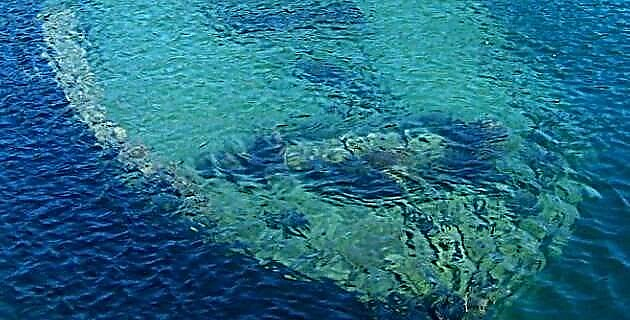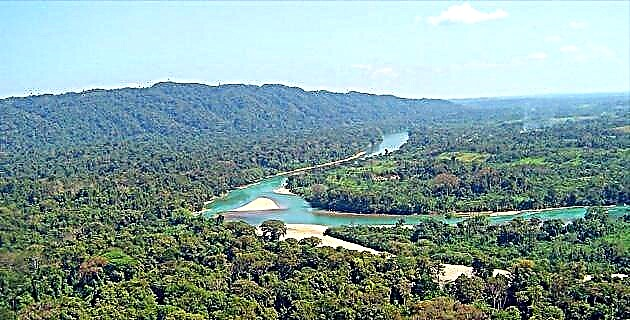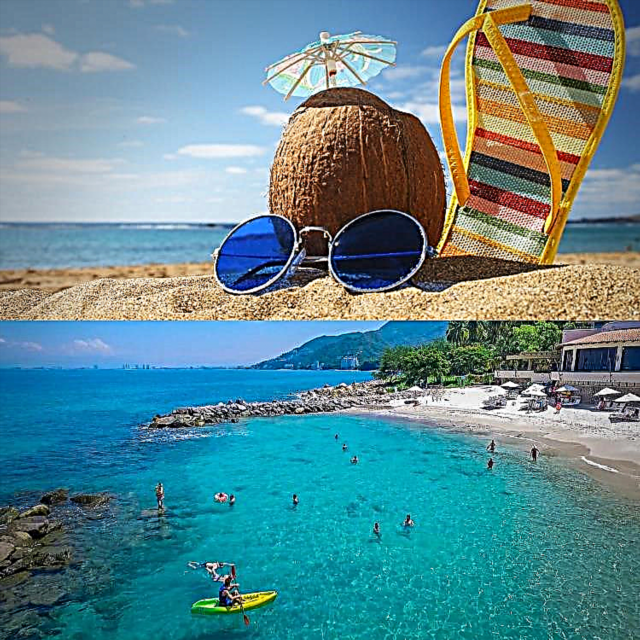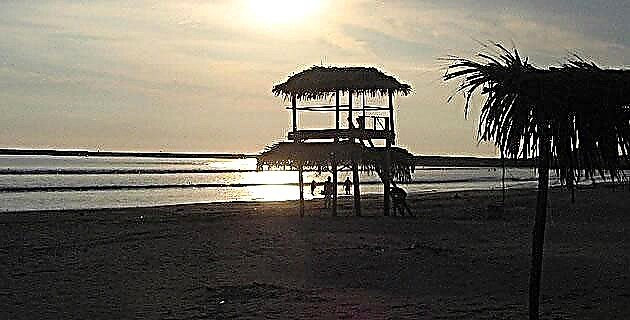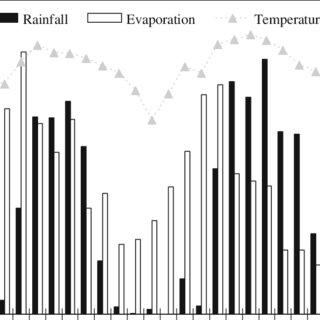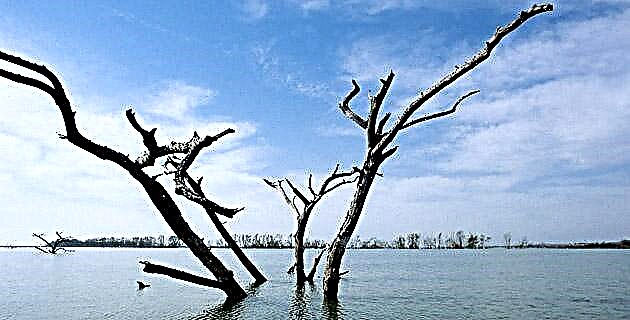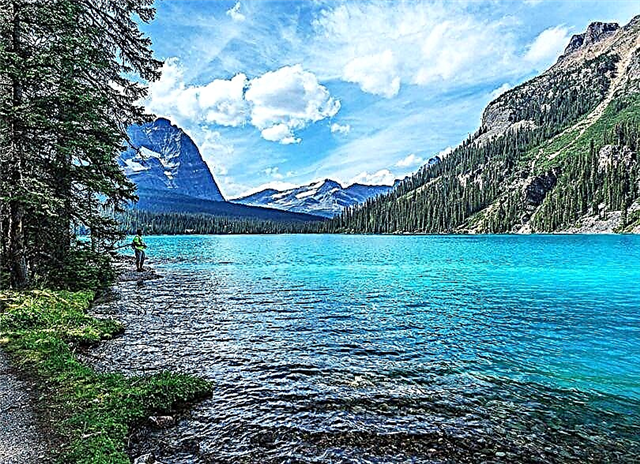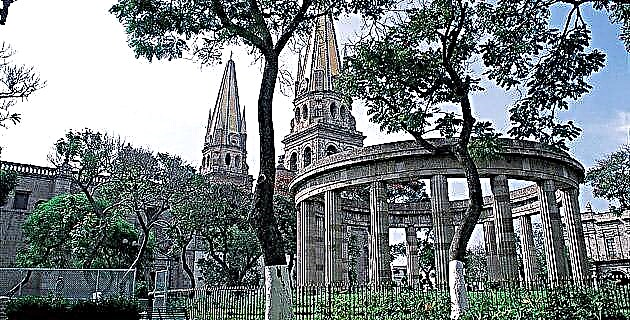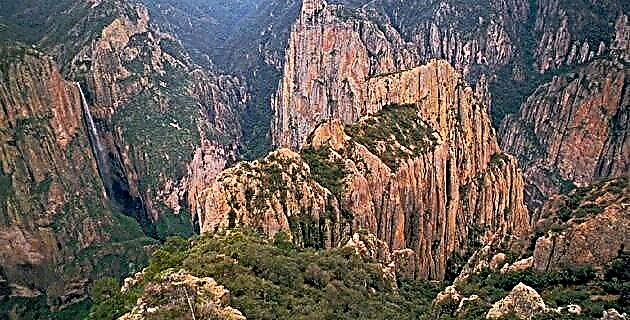
From 1601 to 1767, the Jesuit missionaries penetrated the Sierra Tarahumara evangelizing most of the indigenous groups that inhabited it: Chínipas, Guazapares, Temoris, Pimas, Guarojíos, Tepehuanes, Tubares, Jovas and of course the Tarahumaras or Rarámuri.
From 1601 to 1767, the Jesuit missionaries penetrated the Sierra Tarahumara evangelizing most of the indigenous groups that inhabited it: Chínipas, Guazapares, Temoris, Pimas, Guarojíos, Tepehuanes, Tubares, Jovas and of course the Tarahumaras or Rarámuri.
Probably the first Europeans to arrive at the Copper Canyon or Sierra Tarahumara were the members of the expedition led by Francisco de Ibarra to Paquimé in the year 1565, who, upon returning to Sinaloa, crossed through the current city of Madera. However, the first Spanish entry, of which there is written testimony, is that of 1589, when Gaspar Osorio and his companions arrived in Chínipas, from Culiacán.
The news about the existence of silver veins attracted the colonizers between 1590 and 1591, a group penetrated to Guazapares; In 1601 Captain Diego Martínez de Hurdaide organized a new entrance to Chínipas, accompanied by the Jesuit Pedro Méndez, the first missionary to make contact with the Rarámuri.
The Catalan Juan de Font, missionary of the Tepehuanes Indians from the north of Durango, was the first Jesuit to enter the Sierra Tarahumara from its eastern slope and established contact with the Tarahumara around 1604, upon entering the San Pablo Valley. In this region he founded the community of San Ignacio and towards 1608 that of San Pablo (today Balleza) which acquired the category of mission in 1640. In the latter, Tarahumaras and Tepehuanes congregated, since the region was the border between the territories of both ethnic groups.
Father Font entered the Tarahumara following the foot of the sierra to the Papigochi valley, but was killed in November 1616 along with seven other missionaries, during a violent rebellion of the Tepehuanes. For pastoral work, the sierra was divided by the Jesuits into three large mission fields and each one became a rector's office: La Tarahumara Baja or Antigua; that of Tarahumara Alta or Nueva and that of Chínipas that came to adjoin the missions of Sinaloa and Sonora.
It was until 1618 that the Irish father Michael Wadding arrived in the region from Conicari in Sinaloa. In 1620 the Italian Father Pier Gian Castani, missionary from San José del Toro, Sinaloa, arrived, who found great disposition among the Chínipas Indians. On his return in 1622 he visited the Guazapares and Temoris Indians and made the first baptisms among them. In 1626, Father Giulio Pasquale managed to establish the mission of Santa Inés de Chínipas, in addition to the communities of Santa Teresa de Guazapares and Nuestra Señora de Varohíos, the first among the Guazapares Indians and the second among the Varohíos.
Around 1632 a major rebellion of Guazapares and Varohíos Indians broke out in Nuestra Señora de Varohíos, in which Father Giulio Pasquale and Portuguese missionary Manuel Martins perished. In 1643 the Jesuits tried to return to the Chínipas region, but the Varohíos did not allow it; Thus, and for more than 40 years, the missionary penetration of the Sierra Tarahumara on the side of the state of Sinaloa was interrupted.
Low and High Tarahumara In 1639, Fathers Jerónimo de Figueroa and José Pascual founded the Mission of the Low Tarahumara, which began missionary expansion in the Tarahumara region. This important project began from the mission of San Gerónimo de Huejotitán, close to the town of Balleza, and established since 1633.
The expansion of this evangelizing task was carried out by following the valleys at the foot of the Sierra on its eastern slope. In September 1673, the missionaries José Tardá and Tomás de Guadalajara began the missionary work in the area they called Tarahumara Alta, which, over almost a hundred years, achieved the establishment of most of the most important missions in the city. Mountain range.
New establishment of the Chínipas mission The arrival of new missionaries to Sinaloa in 1676 gave the Jesuits the impetus to attempt the reconquest of Chínipas, so in the middle of that same year Fathers Fernando Pécoro and Nicolás Prado reestablished the mission of Santa Agnes. The event inaugurated a stage of growth and other missions were founded. To the north they explored up to Moris and Batopilillas, and have contact with the Pima Indians. They advanced towards the east of Chínipas, until Cuiteco and Cerocahui.
In 1680 the missionary Juan María de Salvatierra arrived, whose work covered ten years of local history. Missionary work continued northward and in 1690 the missions of El Espíritu Santo de Moris and San José de Batopilillas were erected.
Indigenous rebellions The imposition of western culture on the indigenous groups of the sierra, had as a response a resistance movement that lasted during the seventeenth and eighteenth centuries, covered almost the entire sierra and interrupted missionary advancement in different regions for long periods of time. The most important rebellions were: in 1616 and 1622, that of the Tepehuanes and Tarahumaras; the guazapares and the Varohíos in 1632 in the Chínipas region; between 1648 and 1653 the Tarahumara; in 1689, on the border with Sonora, the Janos, Sumas and Jocomes; in 1690-91 there was a general uprising of the Tarahumara, which was repeated from 1696 to 1698; in 1703 the uprising in Batopilillas and Guazapares; in 1723 the cocoyomes in the southern part; on the other hand, the Apaches attacked in the sierra throughout the second half of the 18th century. Finally, with less intensity, there were some uprisings throughout the 19th century.
Mining expansion The discovery of mountain mineral resources was decisive for the Spanish conquest of Tarahumara. The colonizers who gave rise to many of the peoples that continue to exist came to the call of the precious metals. In 1684 the Coyachi mineral was discovered; Cusihuiriachi in 1688; Urique, at the bottom of the ravine, in 1689; Batopilas in 1707, also at the bottom of another ravine; Guaynopa in 1728; Uruachi in 1736; Norotal and Almoloya (Chínipas), in 1737; in 1745 San Juan Nepomuceno; Maguarichi in 1748; in 1749 Yori Carichí; in 1750 Topago in Chínipas; in 1760, also in Chínipas, San Agustín; in 1771 San Joaquín de los Arrieros (in Morelos); in 1772 the mines of Dolores (near Madera); Candameña (Ocampo) and Huruapa (Guazapares); Ocampo in 1821; the Pilar de Moris in 1823; Morelos in 1825; in 1835 Guadalupe y Calvo, and many others.
19th century and the Revolution Around 1824 the State of Chihuahua was formed, a territory that participated in the conflicts and difficulties of our country throughout the 19th century, thus in 1833 the secularization of the missions resulted in the dispossession of the communal lands of indigenous peoples and with it discontent. The struggle between the Liberals and Conservatives, which divided Mexico for years, left its mark on the sierra when several clashes took place, mainly in the Guerrero region. The war against the United States forced the governor of the state to take refuge in Guadalupe, and Calvo. The French intervention also reached the region. During this period the state government found refuge in the mountains.
The re-election of Benito Juárez, in 1871 was the origin of the armed uprising of Porfirio Díaz who, with great support from the people of the mountains, headed towards it from Sinaloa in 1872 and arrived at Guadalupe and Calvo to continue to Parral. In 1876, during the uprising that was to bring him to power, Díaz had the sympathy and collaboration of the Serranos.
In 1891, already in the midst of the Porfirian era, the Tomochi uprising occurred, a rebellion that ended with the total annihilation of the town. It was during this time that the government promoted the entry of foreign capital, mainly in the mining and forestry areas; and when the concentration of land ownership in Chihuahua formed huge latifundia that extended to the mountains. The first years of the 20th century witnessed the entry of the railway that reached the towns of Creel and Madera.
In the 1910 revolution, Tarahumara was the scene and participant in the events that were to transform our country: Francisco Villa and Venustiano Carranza were in the mountains, crossing it.

